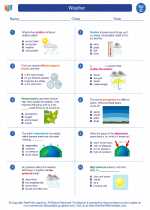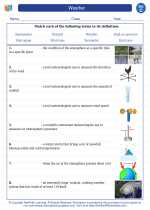Melting
Melting is the process by which a solid substance changes into a liquid state. This change occurs when the temperature of the solid is raised to its melting point. At this point, the internal structure of the solid becomes disordered and the particles gain enough energy to overcome the forces holding them in a fixed position. As a result, the solid turns into a liquid.
Key Concepts
- Melting Point: The specific temperature at which a solid turns into a liquid. It is a characteristic property of the substance.
- Energy Absorption: Melting requires the absorption of heat energy to break the bonds holding the solid together.
- Particle Movement: As the solid melts, the particles gain enough energy to move freely, resulting in a change from a fixed arrangement to a more random arrangement.
- Reversible Change: Melting is a reversible change, meaning the liquid can solidify again when it is cooled to the same temperature at which it melted.
Study Guide
Here are some key points to help you understand the concept of melting:
- What is the difference between a solid and a liquid?
- How does the melting point of a substance relate to its molecular structure?
- Give examples of substances with low and high melting points. What factors influence the melting point of a substance?
- Explain the role of heat energy in the process of melting.
- What are some real-life applications of melting in everyday situations?
- Describe a simple experiment to demonstrate the process of melting. What materials would you need?
- Discuss the environmental impact of melting processes, such as ice melting in polar regions.
Understanding the process of melting is important in various fields such as materials science, chemistry, and environmental studies. By mastering this concept, you will have a better grasp of how matter behaves under different conditions.
.◂Science Worksheets and Study Guides Third Grade. Weather
Study Guide Weather
Weather  Worksheet/Answer key
Worksheet/Answer key Weather
Weather  Worksheet/Answer key
Worksheet/Answer key Weather
Weather  Worksheet/Answer key
Worksheet/Answer key Weather
Weather  Vocabulary/Answer key
Vocabulary/Answer key Weather
Weather  Vocabulary/Answer key
Vocabulary/Answer key Weather
Weather 

 Worksheet/Answer key
Worksheet/Answer key
 Worksheet/Answer key
Worksheet/Answer key
 Worksheet/Answer key
Worksheet/Answer key
 Vocabulary/Answer key
Vocabulary/Answer key
 Vocabulary/Answer key
Vocabulary/Answer key

The resources above cover the following skills:
EARTH AND SPACE SCIENCE (NGSS)
Earth’s Systems
Students who demonstrate understanding can:
Represent data in tables and graphical displays to describe typical weather conditions expected during a particular season.